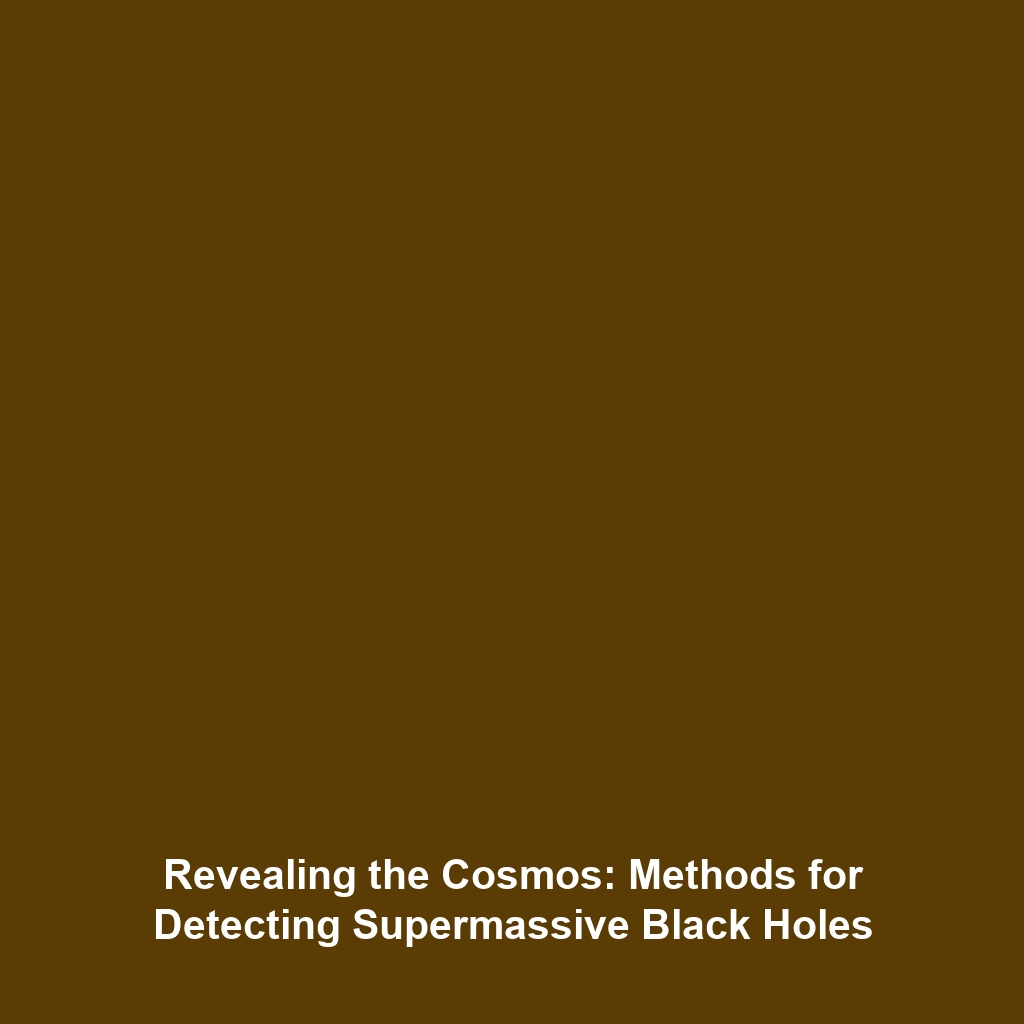Potential Role of Black Holes in Dark Matter Theories
Introduction
The quest to understand dark matter continues to be a pivotal theme in modern astrophysics. Among the intriguing theories being explored is the potential role of black holes in dark matter frameworks. As enigmatic entities that warp spacetime, black holes may serve as crucial pieces in the cosmic puzzle of dark matter, which constitutes around 27% of the universe yet remains largely unobserved. This article delves into the connections between black holes and dark matter theories, shedding light on their significance and implications for our understanding of the cosmos.
Key Concepts
Understanding Dark Matter
Dark matter is hypothesized to exist due to its observable gravitational effects on visible matter, such as galaxies and galaxy clusters. It does not emit, absorb, or reflect light, making it invisible and detectable only through gravitational interactions.
The Potential Role of Black Holes
Research suggests that black holes, particularly primordial black holes, could make up a significant portion of dark matter. These black holes might have formed in the early universe and could provide explanations for certain astronomical phenomena that conventional dark matter theories struggle to elucidate.
Applications and Real-World Uses
The potential role of black holes in dark matter theories has several theoretical and observational implications:
- How black holes are used in dark matter research: Scientists are investigating black holes’ gravitational effects to map dark matter distribution in the universe.
- Applications of black hole theories: Advanced simulations and models based on black hole dynamics may help astronomers design better observational strategies for identifying dark matter signatures.
Current Challenges
Despite the promising connections between black holes and dark matter, several challenges persist:
- Challenges of studying black holes: Black holes are notoriously difficult to observe directly, complicating empirical validation of their role in dark matter theories.
- Issues in dark matter detection: Current methods of detecting dark matter primarily focus on non-baryonic candidates, often overlooking the potential contributions of black holes.
Future Research and Innovations
The future of research into the potential role of black holes in dark matter theories looks promising, with numerous avenues being explored:
- Breakthroughs in gravitational wave detection may provide new insights into black hole mergers and their implications for dark matter.
- Next-generation telescopes are set to improve our ability to observe cosmic phenomena potentially linked to dark matter and black holes, leading to more sophisticated theoretical models.
Conclusion
In summary, the potential role of black holes in dark matter theories offers a fascinating perspective on some of the universe’s biggest mysteries. Continued research in this area not only deepens our understanding of black holes but also has far-reaching implications for our grasp of dark matter. To explore more about related topics, consider checking out our articles on black holes and dark matter theories.








